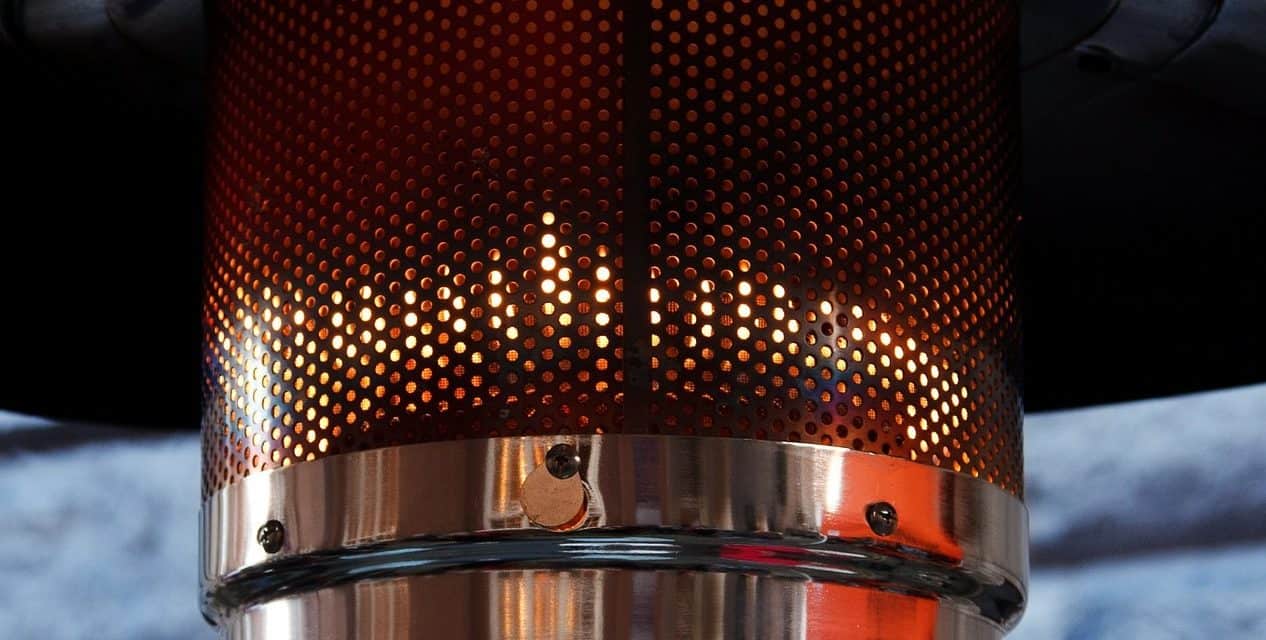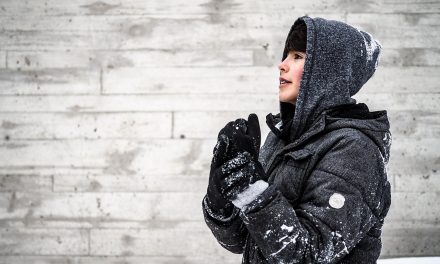The daylight hours dwindle and the evenings have grown colder, but you’re not ready to give up on sitting outside. If this sounds familiar, then it’s time to warm up your winter with an outdoor patio heater.
Patio heaters won’t bring the summer any sooner, but it will help you enjoy your time outside during the chilly months. When you choose the right patio heater for your garden, outdoor gatherings, and evening BBQs can continue no matter what the temperature is outside.
Propane patio heaters are some of the most convenient types of patio heaters on the market. Why? Because they’re efficient, attractive, self-contained and you don’t need to run an extension cable across the garden. In this article, we’ll review five of the best propane patio heaters in 2020.
Types of patio heaters
Freestanding
Freestanding patio heaters are ideal for large outdoor areas as they are completely self-contained units. Most provide storage space for 20lb propane bottles inside the base, and the heaters themselves can stand directly on the ground. They’re not as portable as tabletop heaters, however, most have wheels in the base. Freestanding patio heaters usually also offer the biggest heat output.
There are two main styles of freestanding patio heaters; both styles offer similar heat outputs.
- Pyramid-style. These are square at the bottom and pointed at the top (like a pyramid). A visible flame runs up a central column, between the base and the top, and the ignition system is usually hidden inside the base with the gas bottle.
- Dome top. These heaters have a concave metal disk at the top that makes it look a bit like a tall and skinny mushroom. The heating element is at the top, and the disk reflects the warmth down and out, offering a wide heating range. Dome top heaters are sometimes less stable than pyramid-style heaters.
Tabletop
Shorter, narrower, and lighter than freestanding patio heaters, these are the best propane patio heaters for small areas. They are small enough to stand on a garden table and compact enough to take on a camping trip.
Where should you use a patio heater?
You should use a propane patio heater outside where there is adequate airflow because they produce carbon monoxide as the propane burns. Using a propane heater inside is dangerous. Some propane heaters may be safe to use under an awning or canopy if there is sufficient airflow but always check the manufacturer’s instructions.
Additionally, you should use a patio heater on a flat and solid surface, such as concrete or paving stones, rather than grass which may not be stable enough. An uneven surface may activate your patio heaters safety switch-off mechanism.
The 5 best propane patio heaters
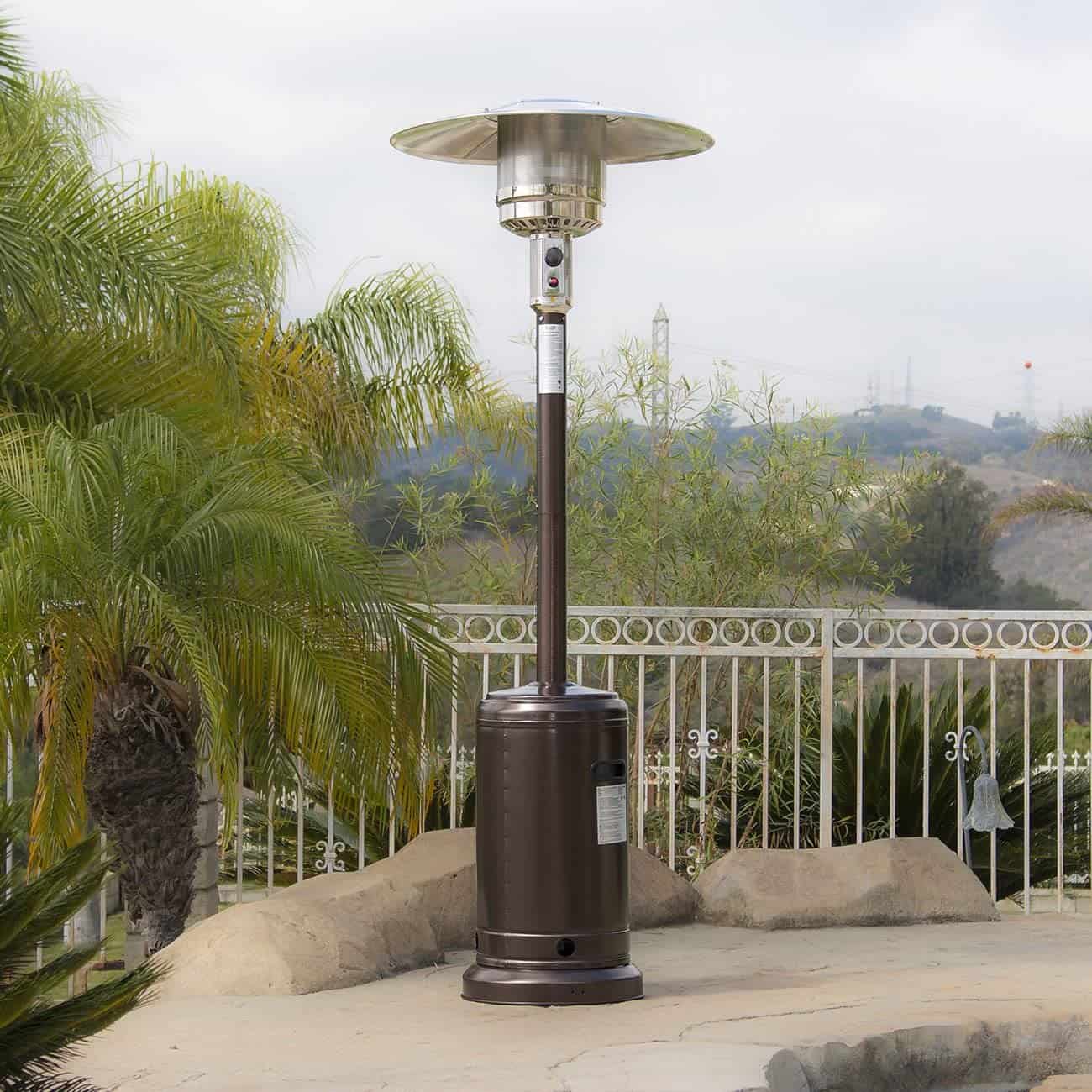
When you’re searching for a sturdy patio heater with a high heat output, the Belleze Premium Outdoor Heater is worth checking out. This heavy-duty patio heater offers a substantial 48,000 BTU heat output, making it one of the hottest heaters on the market.
There’s no need to huddle around the heater either because this model heats a diameter of 15 feet (175 square feet), just what you want for chilly winter gatherings. On warmer nights, you can adjust the heat output between high or low using the variable heat control. It’s easy to light too, thanks to the electric ignition system.
When it comes to safety, the Belleze has a safety tilt shut off valve which will automatically turn off the heater when it’s tilted past a 30o angle. The propane tank is stored in the base of the stand and protected from the elements by a durable steel casing.
pros
- High heat output
- Adjustable heat settings
- Wheels in the base
- Safety shut-off mechanism
- CSA Certified
cons
- Tends to wobble in moderate winds
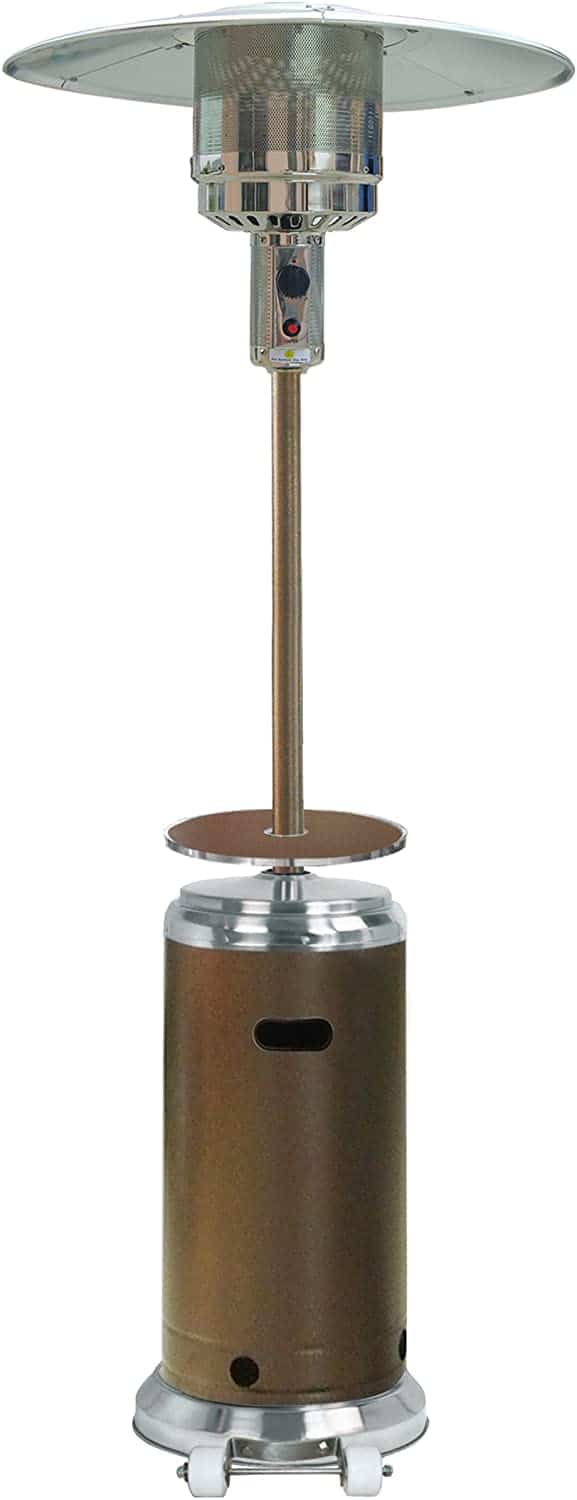
This Hiland patio heater produces 48,000 BTU heated output and has a great design, with an elegant bronze finish. One of the best features is the circular table that you can adjust to your preferred height. This gives you a convenient place to put your drink while sitting or standing.
We like that this model is built with a door in the base of the heater, providing easy access to the propane bottle. You don’t need to lift the casing to change the gas bottle as you do with the Belleze outdoor heater.
The heater has an electric ignition switch and temperature dial, both are located at the top of the heater – out of reach of curious children. It also has a weight bladder that you can fill with water or sand for extra stability and an auto shut-off feature in case of accidents.
pros
- Comes with an adjustable table
- High heat output
- Auto shut-off mechanism
- CSA approved
cons
- Expensive

If you want a patio heater that compliments your garden decor, the Thermo Tiki Deluxe is one of the most attractive outdoor patio heaters on the market. It is also available in three color finishes.
The most eye-catching feature is its adjustable dancing flame that’s sealed inside a ceramic heating column and protected by stylish steel mesh. This model provides 38,000 BTUs of heat (peak output of 45,000 BTUs) and heats a diameter of up to 15 feet.
This heater is more than just good looking though. It’s made from a combination of high-quality steel and aluminum. It has a rust and corrosion-resistant finish and is built to withstand UV rays, salty air, and rough weather.
A 20 lbs propane tank and electric ignition system are hidden inside the base of the heater. Like most certified patio heaters, the Thermo Tiki Deluxe will automatically shut-off when tilted.
pros
- Very Sturdy
- Durable materials
- Wheels built into the base
- Adjustable heat settings
- Auto shut-off safety feature
- CSA, ANSI, and CE Certified
cons
- Average heat output is under 40,000 BTUs

Like the Thermo Tiki, the Hiland Pyramid Patio Heater is another well designed outdoor heater with a sturdy base and stylish finish. The main materials are high-quality steel and aluminium with a quartz glass tube running through the centre. It comes in a range of four colors so you can match your heater to your outdoor decor.
This patio heater offers an impressive 40,000 BTUs of heat and will warm an area of approximately 20 feet. The flame and heat intensity is adjusted from the temperature control dial which is hidden inside the base with the electric ignition switch. Plus, an easy access door in the base lets you change the propane tank quickly and easily.
Additionally, it will make as an elegant feature in your back garden. This model is safe to use under a covered patio, depending on roof materials, but at 89 inches tall it might be a challenge to fit safely under an awning.
pros
- CSA approved
- Anti-tilt shut-off mechanism
- Adjustable temperature control
- High heat output (40,000 BTUs)
cons
- Pricey
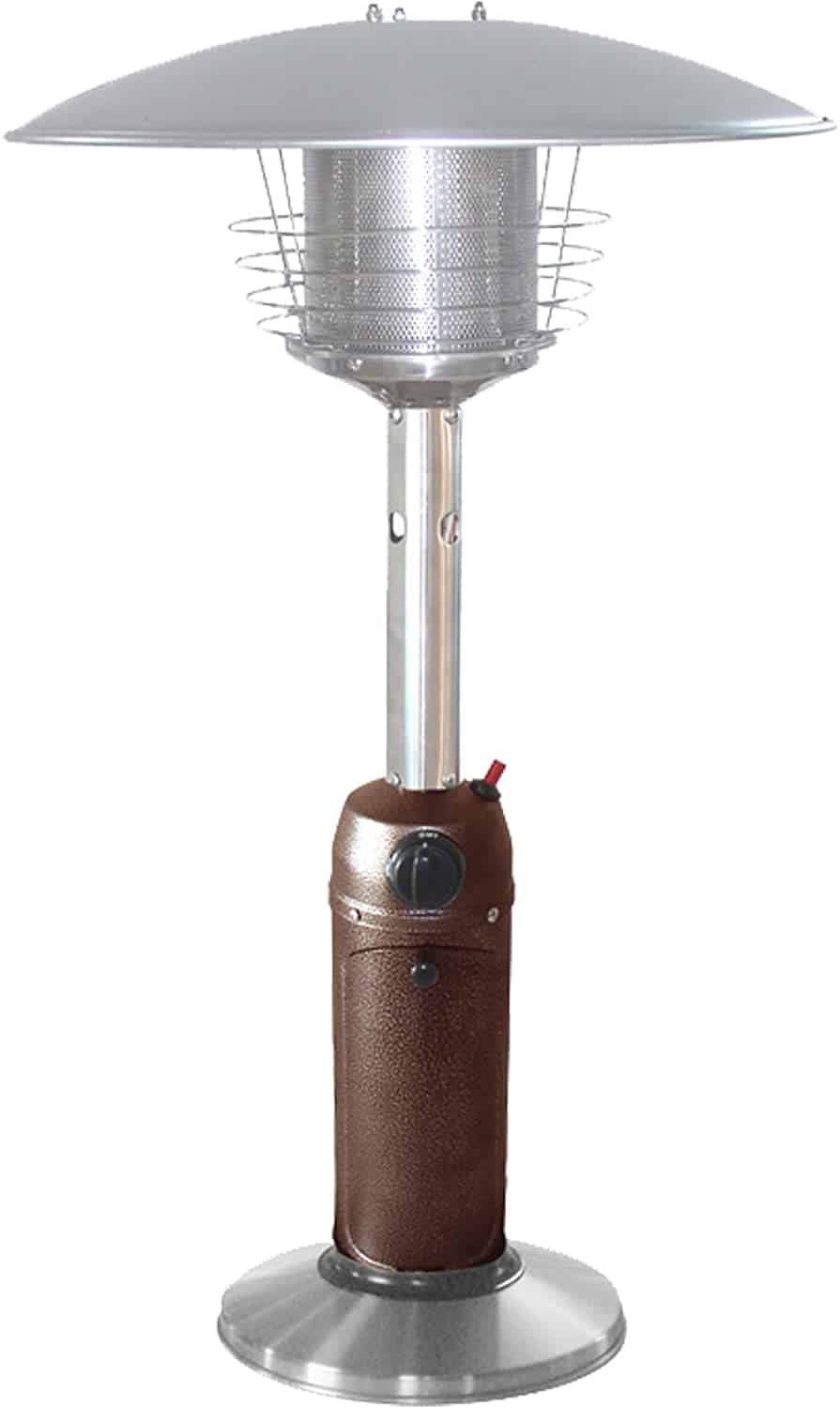
If you spend a lot of time sitting around the garden table you might want to consider the Hiland tabletop patio heater. At 38 inches tall, it has a shorter design and slimmer base than regular heaters.
This makes it a smarter option for a compact patio area or balcony. Although narrow, it has a heavy plate built into the base for extra stability.
The compromise is that it offers just 11,000 BTUs of heat and a shorter run time. The base gives you space to store a 1 lb propane bottle which will give you up to 4 hours of runtime depending on the heat setting.
On full blast, you’ll need to change the tank every 1.5 to 2 hours. However, you have the option of attaching an adapter hose (not included) and running the heater from a 20 lbs bottle.
pros
- Great for small patios and balconies
- Electronic ignition
- Adjustable temperature
- Weighted base
- CSA approved
cons
- Not enough heat for large areas
- The base can only hold a small propane bottle
Buyers Guide: How to choose a patio heater
From reading through our selection of the best propane patio heaters in 2020, you might already have a good idea which will be the best for you. Before you jump ahead and make your purchase, take a few minutes to read about the essential features to look for in an outdoor patio heater.
Heat output & range
A patio heater that doesn’t keep your hands warm is useless, so heat output should be one of your top considerations. Most manufacturers rate their products’ heat output in BTUs (British thermal units), which indicates the amount of heat it will provide. The higher the number, the hotter it will be.
Some manufacturers also specify the heating range; this means the physical area that the heater can warm. Most freestanding heaters can heat a wider area than tabletop heaters can, but always check the product specifications.
The simple formula for working out how many BTUs you need is the size of your patio area or garden (length times width in feet) multiplied by 20 BTUs. e.g. 50 ft x 30 ft = 1,500 square feet. 1,500 x 20 = 30,000 BTUs.
You’ll also need to consider the climate you live in, is it particularly cold or mild in the evenings, and how protected your patio area is; is it open, closed on three sides, or do you have an overhead shelter that helps to trap heat. All of these factors will affect the number of BTUs you need.
Ignition System & Temperature Controls
Temperature controls allow you to adjust the heat output; all of the heaters in our top five list have an adjustable temperature dial and electric ignition switch, so there’s no need to play with matches or lighters. Also, think about where you want the controls to be, high up as they usually are on dome top heaters or hidden inside the base like in pyramid-style heaters. Either way, you want the dial out of the reach of kids and pets.
Storage & Portability
Tabletop heaters are the most portable type of propane heater because they’re small enough to be picked up and moved or taken in the car. Freestanding heaters, on the other hand, are heavy and awkward. The built-in wheels are only for moving it around the patio area. Likewise, if you plan to store it in the summer, then you might want to consider a tabletop patio heater or freestanding heater with a weatherproof cover.
Brand
The best propane patio heaters are not cheap, so we recommend buying one from a trustworthy brand. Some of the brands on our list, including Hiland (sold by AZ Patio Heaters), include a one-year guarantee for their heaters. If something does go wrong, you won’t need to buy a new patio heater. Good brands usually include a decent warranty, which is something to consider.
Certifications
You also want to look out for certifications from established bodies such as the Canadian Standards Association (CSA), American National Standards Institute (ANSI), and European Conformity (CE). These certifications show that it has been tested and is safe to use.
Patio heater safety tips
- Always use your patio heater outside on a flat and stable surface
- Don’t use your heater close to walls, trees, or flammable materials
- Remember to turn off your heater when not in use
- Make sure your patio heater is certified by a respected safety standards organisation and that it has a safety-tilt switch-off mechanism
- Turn off the heater after use and store it in a cool place away from direct sunlight
- Never hang things (i.e. clothes) near the heating mechanism or on top of the heater
- Check your heater before each use and contact the manufacturer if it appears damaged or faulty
FINAL THOUGHTS
There’s no need to spend your days and nights inside just because the temperature has dropped. Choose the best patio heater for your personal outdoor space, and you can enjoy the fresh air until spring comes around.
- 5 Best Water Containers for Camping In 2021 - March 3, 2021
- 5 Best Rooftop Tents For The Outdoors In 2021 - February 5, 2021
- 10 Best US Campgrounds For People Who Don’t Camp - January 17, 2021

